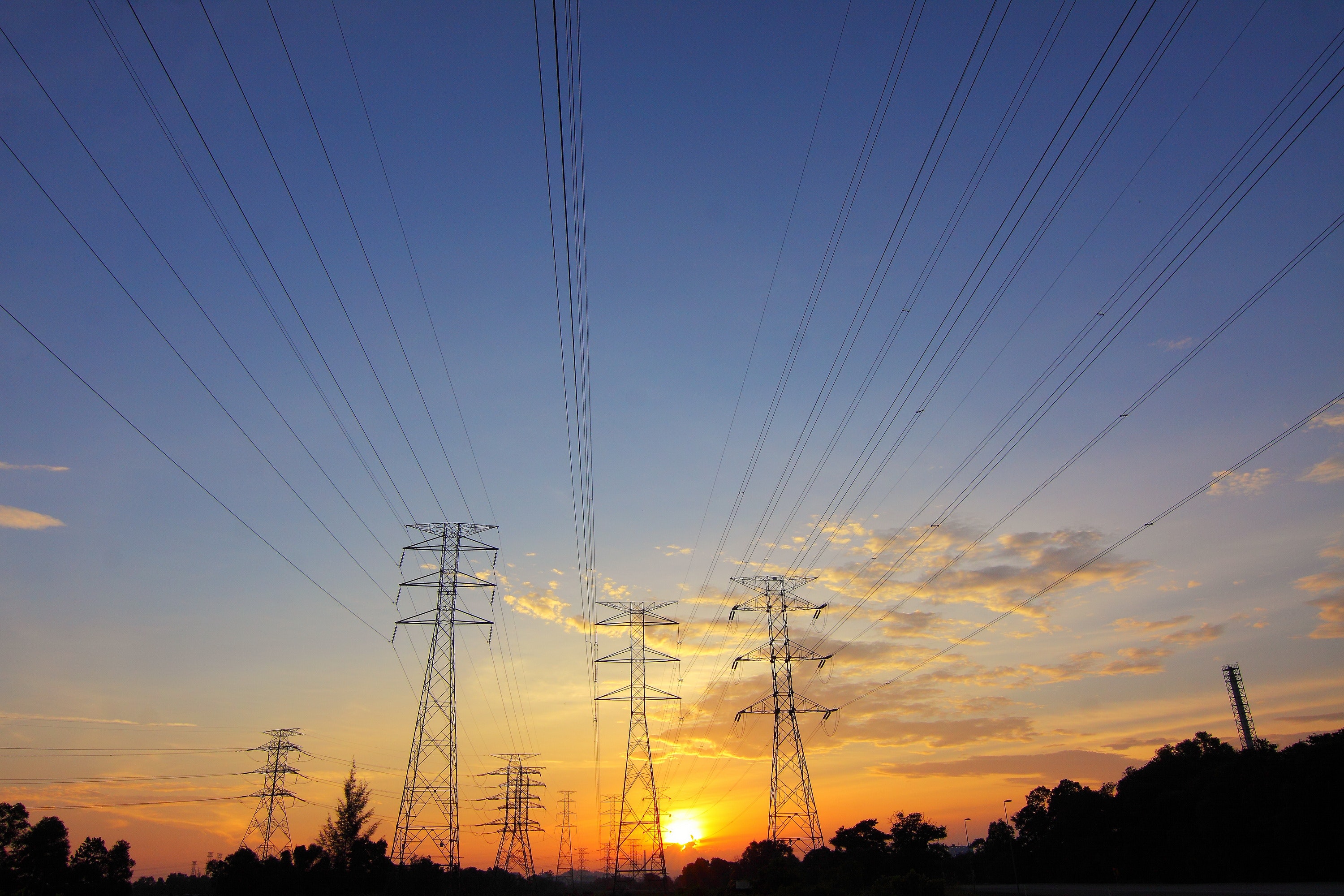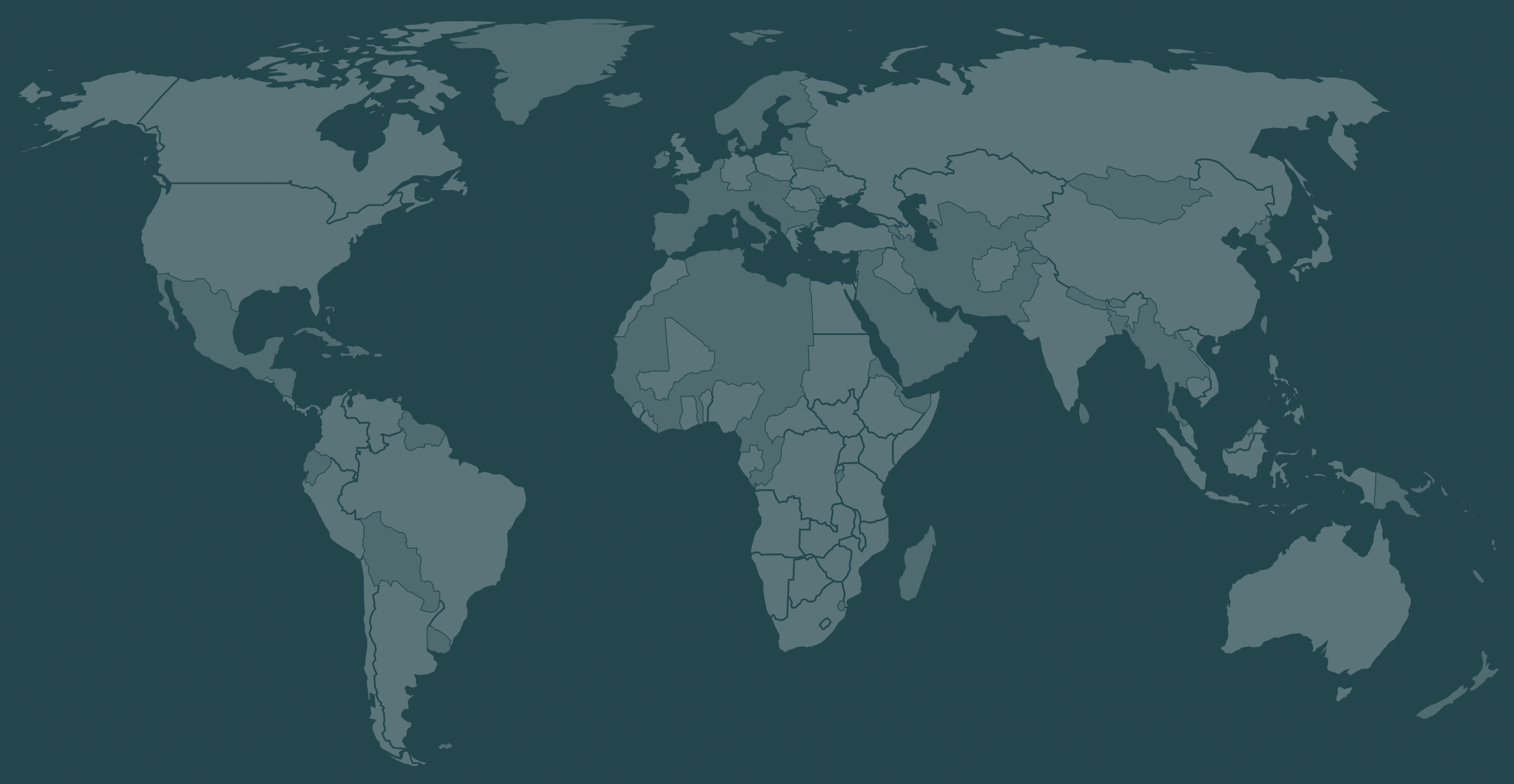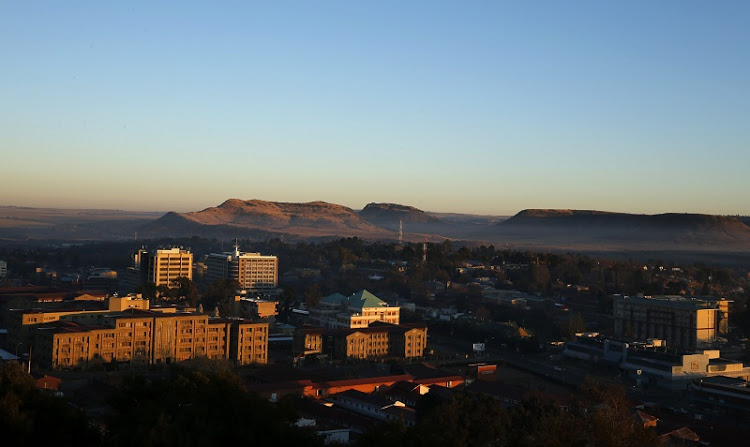News
Will you have to fill Eskom's R30bn Covid hole?
The coronavirus has given Eskom space to deal with some of its problems. At the same time, however, it has created dramatic new issues for which there are no easy answers

Research Director, The Brenthurst Foundation

Director, The Brenthurst Foundation

If Eskom had a cent for every time someone dusted off the Winston Churchill quote "Never let a good crisis go to waste" since Covid-19 stopped the world in its tracks, the lumbering power utility would have far fewer financial headaches than it does today.
Eskom knows all about crises — what with its R450bn debt, decrepit power stations and the politics of reducing its bloated, unproductive workforce. Covid-19 has bought it breathing space as the economy has shut down, and electricity use has fallen.
But has it used the Covid-19 moment to fix things? Or will everything come crashing down again once the lockdown ends and business needs power again?
The reality is, Covid-19 has brought with it a whole new set of headaches for Eskom. CEO André de Ruyter's company now has four core problems — some of which have been made worse by the virus. These are:
- Earning enough revenue to cover its debt and operating costs;
- Generating enough electricity for private and industrial users;
- Dealing with structural problems so it becomes a functional economic entity; and
- Rooting out corruption and patronage so that the utility begins paying market-related prices again for inputs such as coal.
These priorities are, of course, interlinked. A utility that generates enough power but fails to deal with its debt because it overpays on shady tenders won't be sustainable. Equally, failing to deliver enough power is also a recipe for ruin.
So on these four priorities, is Eskom on the road to ruin or to recovery?
1. Are Eskom's books closer to balancing?
During the lockdown, industry closed down. Consumers found themselves strapped for cash too, with more than a million people estimated to have lost their jobs.
De Ruyter told energy expert Chris Yelland in mid-April that he expected the overall knock to the utility's cash flow during the lockdown to be R2.5bn a month because of lower power consumption.
"Of course, the impact on our revenue line is greater, but there is also a saving by virtue of the fact that we burn less coal and diesel, so there are fairly large primary energy cost savings," he said.
But there were many uncertainties. "At this point, we don't know if the lockdown is going to be extended further. We don't know the rate of recovery of the economy once industry reopens and people return to work, or whether there will be a structural reduction in electricity consumption. These are very difficult things for us to call."
How big an impact has Covid-19 made on Eskom's bottom line? That's the multibillion-dollar question.
Independent economist Mike Schüssler estimates that Eskom will have lost about R10bn, confining it just to residential sales. But that's only the beginning.
"Also, many more people will not be able to pay due to job losses and short time [so] I would guess [the impact to be] R5bn-R10bn — say about 8% less than planned. And then the normal stuff that goes wrong, like load-shedding, adds say another 2%-4%."
Schüssler hazards that Eskom might lose up to R30bn from Covid-19, though he warns that it's impossible to make a hard call on this number, given the variables.
The next trick is how it will fill this hole. Are overburdened consumers in for even more bruising tariff hikes?
Already, electricity tariffs have been hiked by 500% over the past 13 years. Eskom's electricity may already be unaffordable for many consumers.
And yet the utility wants to radically hike the price of electricity so it can improve its own balance sheet. But the cost for businesses — many of which will then probably choose to invest in private energy generation to mitigate these costs — makes this a difficult proposition.
On May 21, De Ruyter gave a "system status briefing" about the impact the virus has had on the utility. The prognosis is grim.
Eskom's debt exceeds R450bn. Last year, it made R33bn in operating cash flow, but it had to spend R69bn on "debt servicing". This means, said De Ruyter, that "we must borrow to service debt".
What's more:
- Revenue is declining 1% a year;
- Tariffs don't reflect Eskom's costs;
- It is owed R38bn by various debtors; and
- Operating expenses have risen 30% in five years, reaching R151bn last year.
It set the scene for what De Ruyter described as Eskom's "death spiral" if the utility were to do nothing.
In this scenario, "poor governance, lack of accountability, disengaged staff and poor morale" would inevitably lead to "severe restrictions" being forced on the utility.
But De Ruyter has a solution. In the presentation, he said Eskom could pull out of the spiral if it got help with its debt. "At a significantly reduced debt balance of R200bn, a closing cash balance of R30bn and ebitda [earnings before interest, tax, depreciation and amortisation] margin of 35%, financial modelling shows that Eskom can achieve independent financial sustainability," he said.
Which is promising. But there's a catch: where will you find a big enough fish to swallow R250bn in debt?
Already, the government has begun to suggest that the Government Employees Pension Fund ought to take it on. But that is politically complicated as it is likely to be resisted by employees nervous about their retirement savings being hit if the immense bet doesn't pay off.
There are other options, like selling off part of the debt in exchange for the buyer taking a stake in Eskom. But that has all but been ruled out because privatisation — the mere whiff of it — remains anathema to the ANC, which is deeply suspicious of business.
The result: the debt question hangs over Eskom like the sword of Damocles.
The Public Investment Corp (PIC) has said it can convert its R90bn in bonds to equity. But that is just sophistry: bonds provide a yield for the holders, so exchanging this for equity in a loss-making business is an awful deal for the pensioners on whose behalf the PIC invests. Why would they approve writing Eskom a blank cheque if most of it will go to finance its inefficiency?
The calamity isn't just about Eskom: the National Treasury is part of the problem. It owes R250bn to independent power producers (IPPs) and this is about to increase after the department of energy bought 2,000MW in emergency power.
If the existing debt is already beyond Eskom's reach, how will this obligation to the IPPs be settled?
De Ruyter told Yelland Eskom will have to slash costs. "I have already engaged with my executive team and told them to manage their costs, manage their procurement, scrub their capex, and get those numbers down, because we don't have the luxury of abundant support from the fiscus, regardless of what happens after Covid-19."
By May, Eskom had cut its capital expenditure by R22bn from R38bn before. But this won't hide the harsh reality: Eskom's financial problems are only mounting, in part due to Covid-19.
2. Can Eskom meet SA's power demand?
Before Covid-19, Eskom was struggling to meet the country's electricity needs. Constant bouts of load-shedding were the order of the day. The thinking was, if economic growth topped 2%, the lights would be switched off.
In January, Eskom COO Jan Oberholzer spelt this out in an ominous "system status briefing": "The power system is vulnerable and volatile, with 21 days load-shedding since September 2019, including stage 6 on December 9, as unplanned breakdowns were above 12,500 MW."
Nor was Eskom able to do all the planned maintenance it needed to — 5,500MW at any one time — because the rest of the grid kept breaking down. Returning the fleet of rickety old power stations to "a more predictable state" would mean more load-shedding.
Oberholzer's diagnosis was clear: the system would be "vulnerable" for 18 months.
While he was speaking, there was a growing sense of unease over a virus in Wuhan, China. Within weeks, it arrived in SA, and President Cyril Ramaphosa imposed one of the world's toughest lockdowns, with all but the most essential industries grinding to a halt.
Electricity use plunged.
De Ruyter had only been in the post three months, but his first response to Covid-19 was to take advantage of the fall in demand to shut down the power stations most in need of repair and get maintenance under way.
When he briefed parliament on May 6 alongside public enterprises minister Pravin Gordhan, De Ruyter was able to deliver the first good news from the utility in years.
Before Covid-19, Eskom had expected 31 days of load-shedding over the next three months; but the fall in demand meant this fell to just three days, as the utility worked furiously to catch up on its maintenance backlog.
"We are taking advantage of the very unfortunate circumstances that are associated with this global pandemic," he said.
Spending on diesel — a major item for Eskom — had fallen from R490m a month to R338m a month by the end of April. This allowed it to save R2.67bn of the R6.98bn it had budgeted for this year.
A new structure with a title as long as its list of tasks had been established: the Reliability Maintenance Recovery Steering Committee would oversee the repairs to power stations. Already, 11 were under supervision.
De Ruyter also announced that 60 retired Eskom engineers had made their services available free of charge, or on the basis of covering their costs in what he described as "a very good form of national service".
And by the end of the year, he said, Eskom would have 900MW in additional capacity — the result of fixing the design faults in its newer power stations.
Power from the IPPs will add to this.
But exactly how the IPP energy will be fed into the system seems to have been stymied by the political manoeuvres of mineral resources & energy minister Gwede Mantashe.
Earlier this year, Mantashe said a new power generation company would be launched, but he was unclear on whether this would be a private entity outside Eskom (in other words, a competitor), or part of it.
Either way, it was news to De Ruyter.
But Mantashe is also in court fighting with the City of Cape Town over its desire to buy its own power. He appears determined that the central government — his ministry in particular — should be the final arbiter on who is let onto the grid.
In his system briefing on May 21, Oberholzer reported that planned maintenance had doubled to more than 9,800MW "during the first two weeks of the national lockdown", starting in late March. For context, consider that before Covid, the average capacity under maintenance was 4,200MW; now it's about 6,776MW.
Oberholzer said: "While we don't expect to implement load-shedding this winter, the risk of load-shedding does remain."
There is, at least, something positive to come out of this crisis: the speed with which Eskom responded to the lockdown by accelerating maintenance shows that when it wants to, the utility can act with agility.
But how effective this maintenance was is still unclear. Once the economy fully recovers and begins showing positive growth, we'll have a better grasp.
The question that remains now is how much of the deeper refurbishment of old power stations — especially the 11 placed on the naughty step for unreliability — can be done before rising demand forces Eskom to slow maintenance down again.
3. The most dramatic overhaul in 90 years
Besides Covid-19 and the battle to keep the lights on, there's also the small matter of an entire existential structural overhaul that has to happen.
On February 7 last year, Ramaphosa announced in his state of the nation address that Eskom would be split into three entities: generation, transmission and distribution.
"It is imperative that we undertake these measures without delay to stabilise Eskom's finances, ensure security of electricity supply, and establish the basis for long-term sustainability," he said.
Done correctly, it would revolutionise the way energy flows in SA. If the company that generates the power is divorced from the one transmitting it over power lines, which itself is separate from the one distributing it into houses, it would, theoretically, be more efficient.
Better-priced cheaper energy would be sourced, and consumers would win.

Eight months later, in October 2019, Gordhan released the "Roadmap for Eskom" explaining how the structure that "served the country well for over 90 years [is] no longer suitable to meet the country's energy needs".
The plan was that transmission would be "functionally separate" by March 2020 and an independent legal entity by 2021. "The Eskom that must emerge from these reforms must be capable, transparent, accountable, competitive and world class. Government has a responsibility to mitigate the systemic risk that Eskom has become to the country," said Gordhan.
But in January, De Ruyter took office and immediately "slammed the brakes" on the roadmap, to use the language of a report in the City Press newspaper.
According to De Ruyter, splitting Eskom into three distinct legal entities too hastily was risky. It would have implications for capital gains tax; there was the complication of transferring employees from one entity to another; there were regulatory issues; and, perhaps most importantly, the new structure needed to make sense to Eskom's financiers.
He suggested it might take two years of consulting auditors, attorneys and financiers before implementation could begin.
But in his presentation on May 21, De Ruyter was singing a different tune. Business models for the three divisions were now "at an advanced stage" and financial statements for each were being finalised, he said.
Was this just a relabelling of existing management staff as "board members"? Or does it, as originally envisaged, presage a separation of power procurement from generation to allow price competition in the market and the entry of private producers?
How has the debt been carved up and does the model allow the three entities a path towards dealing with their part of the problem? Or has De Ruyter ticked the boxes without answering a problem he initially believed might take two years to solve?
4. Eskom's biggest hurdle
Perhaps the most serious challenge awaiting Eskom is rooting out graft, cadre deployments, overstaffing and shady dealings during state capture and before.
Gordhan has identified that rooting out corrupt practices is essential to restoring Eskom to serve the country and not the corrupt elites. Graft and riding high on the hog without any signs of increased productivity are central to Eskom's soaring costs.
"The numbers are atrocious," Gordhan said in a January interview. "The amount of electricity Eskom produces is marginally higher. The demand is falling by about 1% a year. The cost of electricity has gone up more than four times. How could you sell the same amount [of electricity], but you're earning four times more than 10 years ago?"
The reason, he said, is that tariffs were imposed to pay for overruns at the Medupi and Kusile power stations, as well as rampant stealing. "It's for all the extra you're paying for coal and maintenance and to original equipment manufacturers … and it's the ordinary citizen and the economy that's paying the cost."
But in dealing with corruption, as well as the overstaffing due to patronage, Eskom finds itself in a political minefield.
Unsurprisingly, an all-out assault has been waged on Gordhan — and on De Ruyter after his appointment — by the beneficiaries of graft during the state capture era.
The building of Medupi and Kusile — two of the largest coal-fired utilities in the world — was bedevilled by poor project management, which led to cost overruns. They were supposed to be completed by 2015 at a cost of R163bn, but building continues to this day with costs rising to an incredible R300bn at the last count.
Faulty boilers, which were contracted to a company linked to the ANC's investment arm Chancellor House, are still being repaired, years after being installed.
But it is not just the big contracts.
Eskom is a major contractor. It contracts parties to build power stations, to maintain them, to supply coal, to truck coal from suppliers to power stations, to procure diesel and to move this to diesel power stations. In addition, it contracts to myriad other suppliers, advisers and subcontractors all along its value chain.
One former Eskom senior executive said the suspect contracts ran into the thousands. With its accounting hobbled during the state capture years, many of these contracts were concluded at inflated prices, with Eskom staff often having a direct but hidden financial interest. Undoing all of this has been a nightmare for management, which began instituting lifestyle audits for its senior employees in 2018.
In Eskom's 2019 annual report, former chair Jabu Mabuza outlined this battle: "Where former employees were implicated in cases of suspected malfeasance and corruption, criminal charges have been laid against them and the cases handed to the relevant authorities for further investigation."
According to Mabuza, R902m had already been recovered from consulting company McKinsey, and a court had ordered Trillian Management Consulting to cough up the R600m, with interest, that it got through unlawful contracts.
While this cost haunts Eskom's balance sheet, the deeply troubling aspect is that it continues. As the report said: "Irregular expenditure for the current year totalled R6.6bn, of which approximately 20% relates to new transgressions. The remaining 80% is attributable to issues which had been detected previously and are continuing until the related contract is condoned, or to prior year transgressions identified during the year."
Cutting the bloated staff is just as tricky.
As De Ruyter told Yelland: "Government has limited us in respect of potential forced retrenchments, so that is not an option open to us at this time. But … it is clear we need to improve our cost base very significantly through the levers at our disposal."
Without getting rid of surplus, unproductive staff, De Ruyter's hands are pretty much tied when it comes to slashing operating costs. But Eskom did take advantage of the one opportunity it had: in February it launched a voluntary severance package. Just under 300 management-level employees accepted the offer and left in March.
Eskom may not yet be a functional or sustainable company that can meet SA's energy requirements, but for the first time in 15 years it's acknowledging the problems. And it has begun to deal with them.
Smartly, De Ruyter has used this moment — where it is Covid-19, rather than Eskom that is the biggest threat to SA — to push through long-overdue maintenance.
It has also begun to deal with costs, even if its expenses are still woefully out of touch with its revenue. But it may hit a wall: the key issue is its bloated and unproductive staff, many of whom appear untouchable as the government shies away from angering the trade unions.
Perhaps the biggest immediate issue is Eskom's R450bn debt. It is a recipe for disaster for Eskom to be borrowing money just to pay back interest on its debt. But it's unclear how De Ruyter can get his wish of slashing debt by R250bn without creating another government debt balloon somewhere else.
Eskom is a complex organisation, so it's not surprising that the reforms will take time. But the solutions aren't just technical; they're political. No matter how well De Ruyter does, the buck stops with Ramaphosa. That moment of reform — of re-establishing governance in the utility — will be a sure test of his, and Eskom's, power.
This article originally appeared in Financial Mail

